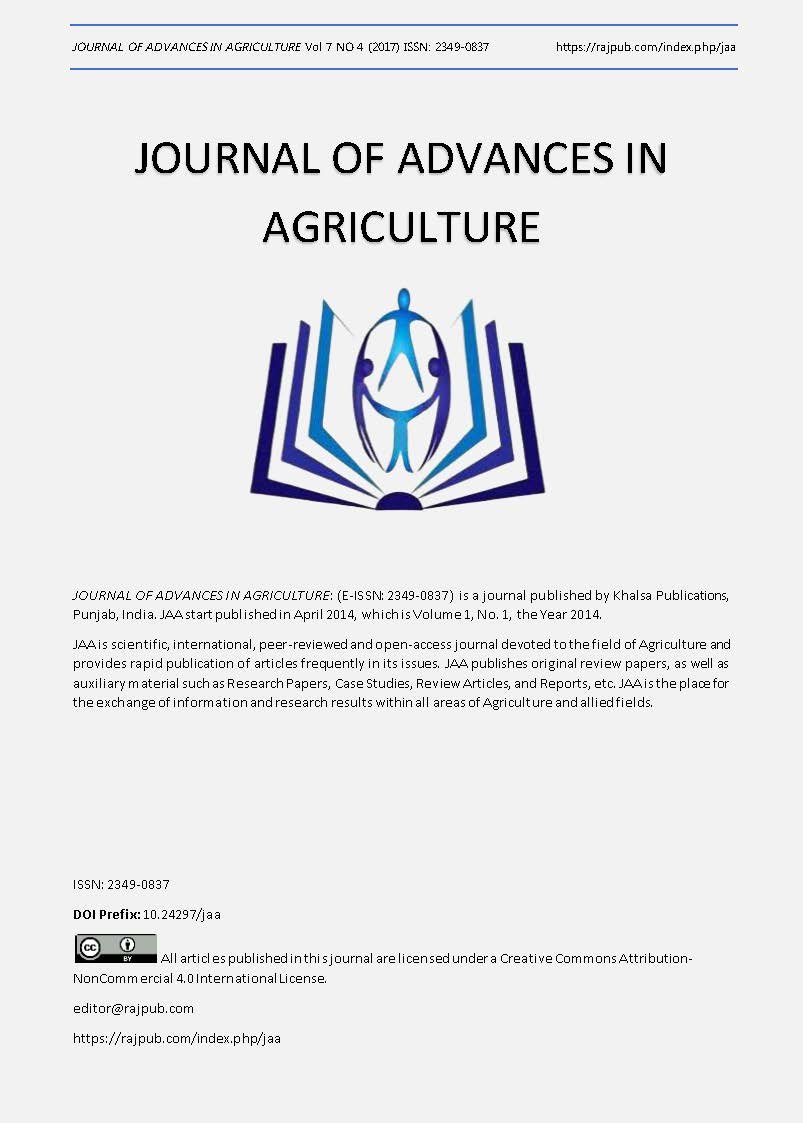Comparison Of Empirical Models For Estimating The Mineralization Potential Of Soil Nitrogen
DOI:
https://doi.org/10.24297/jaa.v7i4.6485Keywords:
Soil, nitrogen, empirical model, fertilisation, organic matterAbstract
Modeling is an attempt to describe a natural event mathematically. The modeling of N mineralization process has a dual interest, agronomical and ecological. The objective of this study is to evaluate several mathematical models to describe the nitrogen mineralization process of soil samples. These samples were collected from 34 sites spatially distributed in the semi-arid region of El-Madher (the Aures area, north-east of Algeria). Using an auger, the systematic surveys have been carried out and composite samples of soils were collected in the field, and subjected to physical and chemical analyzes. In order to track the kinetic organic nitrogen mineralization, similar samples were collected and taken into cool boxes have been incubated in laboratory, sieved (2 mm) and stored at 4°C before use and then incubated at 28°C for 56 weeks. To facilate comparison, all results have been statistically analyzed, by nonlinear regression and analysis of variance method. Four empirical models were tested to fitt the value found experimentally. The linear kinetics model Nm=k t Ni, the single first-order kinetics model (MI) Nm = Ni e-kt + No (1 - e-kt), the double first-order and the exponential kinetics model (MII) Nm=Ni e-kt + No (1 - e-kt) + e-ht and the hyperbolic kinetics model (MH) Nm=NoH.t/(Tc+t) Ni were used to simulate the cumulative mineralized N (NH4+-N and NO3- -N) in the laboratory incubation. In order to test the performance and robustness of the different models three goodness of fit (coefficient of determination R2, Root Mean Square RMS and Mean Relative Error RMSE) were used. Moreover, the parameters obtained by the different models determined the predictions of nitrogen mineralization. The best results were obtained using the double first-order and exponential kinetics model. The results showed no significant difference between nitrogen mineralized for 56 weeks and nitrogen predicted by various models. However, the N predicted by the MII appears to be the best compared to other models. Indeed, the overestimation of nitrogen potentially mineralizable (N0) obtained by this model was relatively lower than other models. This has been confirmed by the study of multiple correlations between net mineral nitrogen and nitrogen predicted by each model. Thus, the results obtained showed a strong positive correlation between mineralized nitrogen values and those of nitrogen predicted by the different models. The correlation coefficients values indicate the folowing order MII (r = 0.878)> MI (r = 0.748)> MH (r = 0.709). The MII model has, therefore, highlighted that two pools of organic matter that mineralize simultaneously were detected in soil. One pool is stable and the other one is labile. One pool evolves with first-order kinetics and the other with exponential kinetics.
Downloads
Downloads
Published
How to Cite
Issue
Section
License
 All articles published in Journal of Advances in Linguistics are licensed under a Creative Commons Attribution 4.0 International License.
All articles published in Journal of Advances in Linguistics are licensed under a Creative Commons Attribution 4.0 International License.




